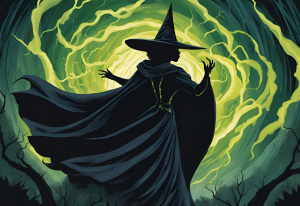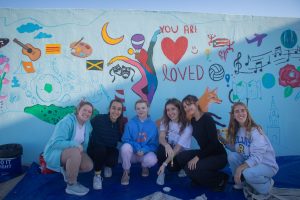Sitting at the piano in Tiedtke Concert Hall, the Israeli pianist, Alon Goldstein, marveled at the Scarlatti sonatas as “studies in imagination of all possibilities of writing for the keyboard.” Goldstein’s program for the afternoon recital—presented by the Bach Festival Society—elaborated and authenticated this concise promulgation on the 18th century composer’s body of work for harpsichord, a forerunner of the piano.
But while Goldstein’s Scarlatti is thoughtfully understated—albeit decorated by gradual decreases in tempo at cadences, and emphases in articulation to distinguish contrast in sections—his Schubert is a pronouncement on the interpretation of the storm and emotional drive of Romanticism.
Schubert’s Fantasie in C Major, ‘Wanderer Fantasy,’ was the centerpiece of a program marked by variety and contrast, which progressed chronologically.
Cast in four uninterrupted movements, the roughly 22-minute Fantasie is a vehicle for expression for the pianist. Goldstein’s force and full range of expression was suited for Schubert’s outpouring of emotion, marked by recurring contrasts in level of loudness and softness.
But what makes Goldstein’s interpretation particularly memorable is his holistic approach to the piece as an integrated architectural construction: he imbued the interstitial material between major developmental sections with a profound sense of pathos and musicality, resulting in a coherent musical structure. This was mostly accomplished through adept and meditative phrasing, which included subtle deviations from the tempo, elongations of rests, and accents.
Liszt’s Paraphrase on Verdi’s Il Trovatore starts with brooding figures in the lower register, which slowly take shape into a theme. After the right hand joins to flesh out the main melodic material based on the opera, the rumble returns; this time it figures in shorter notes, while the right hand shapes a delicately subdued main melody. Goldstein’s full-bore flair sparked toward the end, as the texture thickened into competing melodies and upward runs in octaves.
As the recital progressed toward the end of the 19th century, Goldstein’s Debussy proved to be a thing of marvel. D‘un cahier d‘esquisses (‘From a Sketchbook’) and L‘isle joyeuse (‘The Joyful Island’) were exquisitely nuanced, colorful, and appropriately impressionistic. In the former, the pianist allowed the parallel chord movement to ring out as if with an aura of unresolved mystery. In the latter, after a high tremulous effect, his articulation of the main theme was crisp against the ethereal atmosphere of Debussy’s ambiguous, yet enthralling harmony.
In his opening comments, Goldstein, a former student of the celebrated American pianist and conductor, Leon Fleisher, wondered at the seemingly infinite possibilities of the piano as a single instrument. Loquacious by nature, he made his point more strongly with music than with words. Whether through his marvelous Schubert, or the whimsically syncopated playfulness of the Three Argentinian Dances by 20th century Argentine composer, Alberto Ginastera, with flashy glissandos up and down the scale in the finale; or perhaps with the fourth of the short Scarlatti selections, in which the hands cross each other on the keyboard no fewer than 130 times (a feat of dexterity), by the end of the recital Goldstein had made new converts to the art of the solo piano even among the most casual listeners.
To find out more about Bach Festival concerts and events, visit bachfestivalflorida.org. Free tickets are available to Rollins students, faculty, and staff.







Be First to Comment